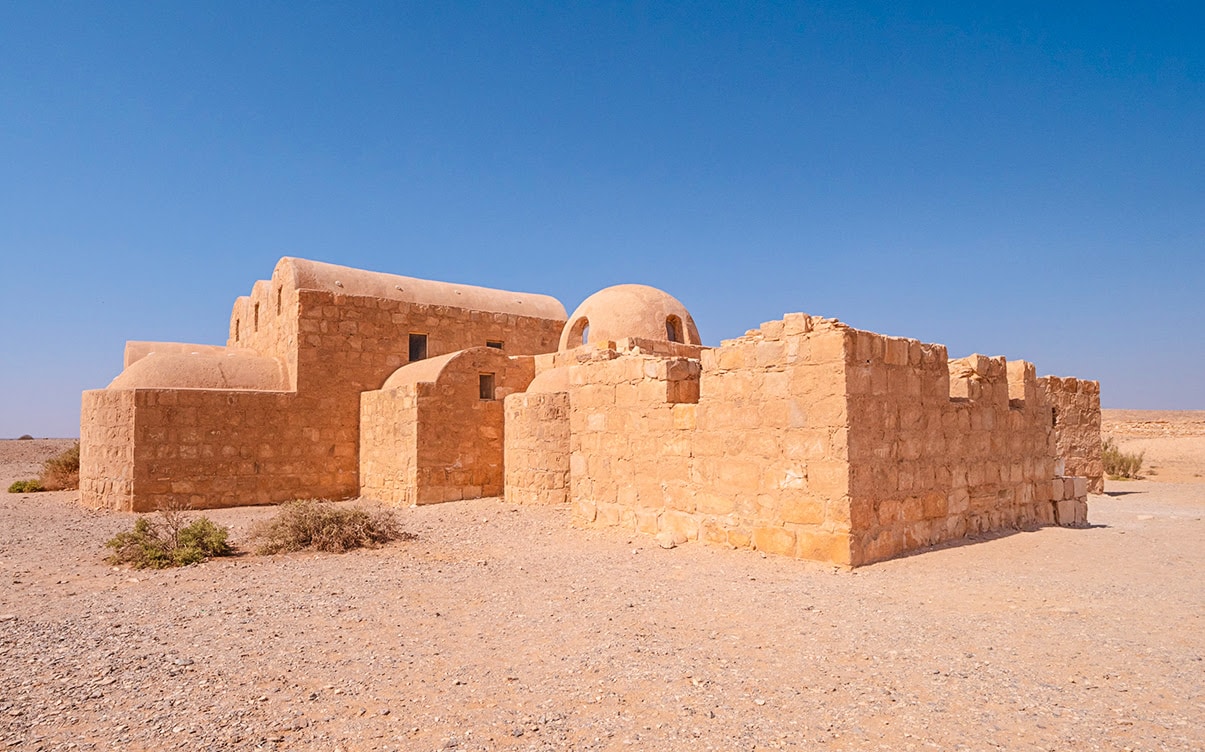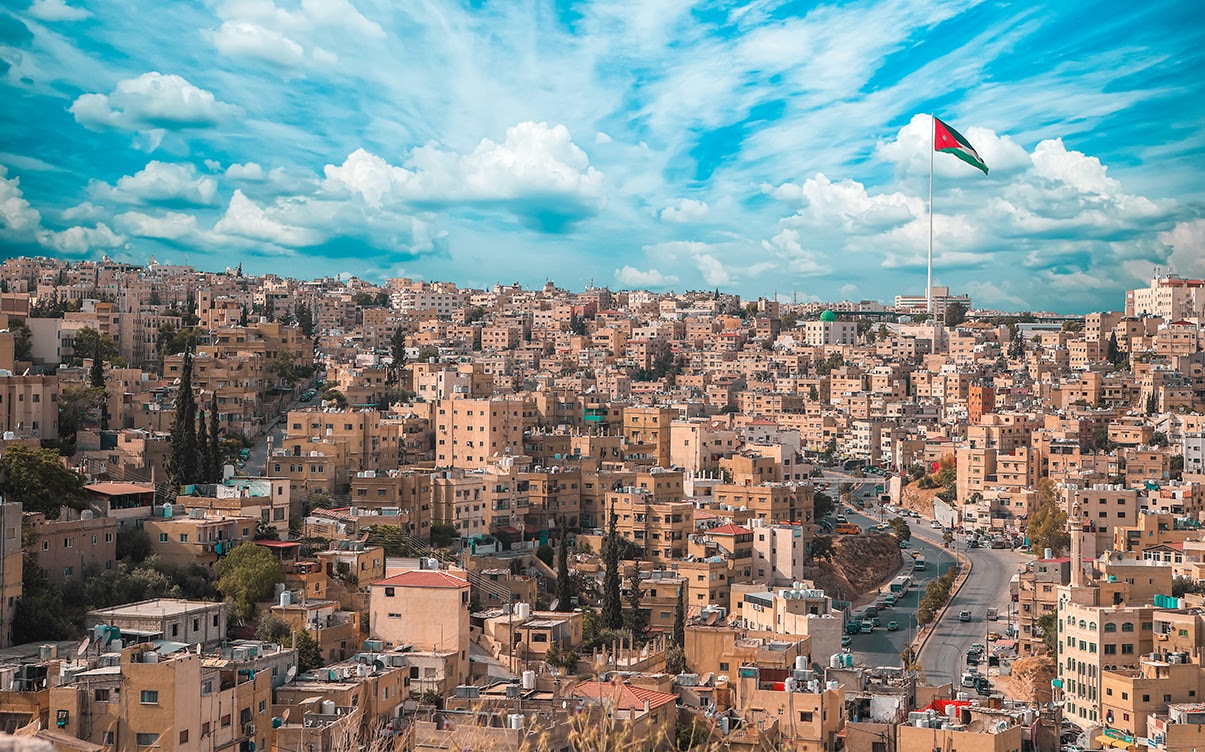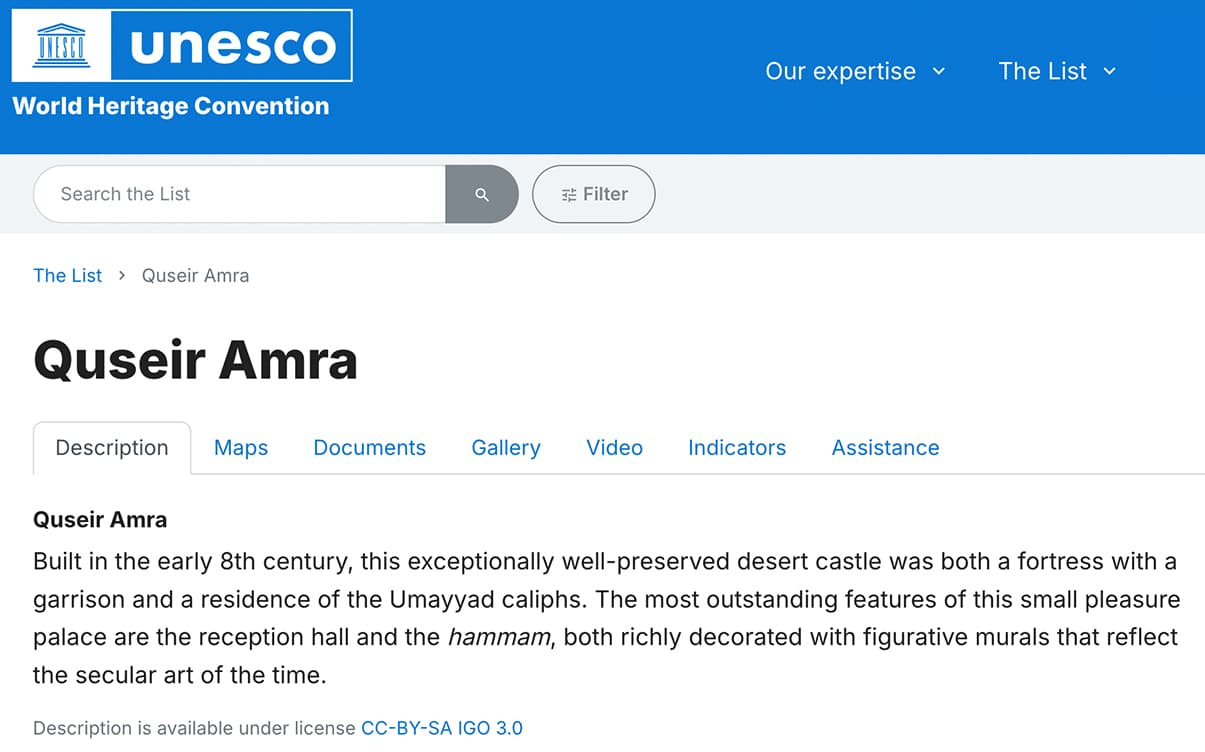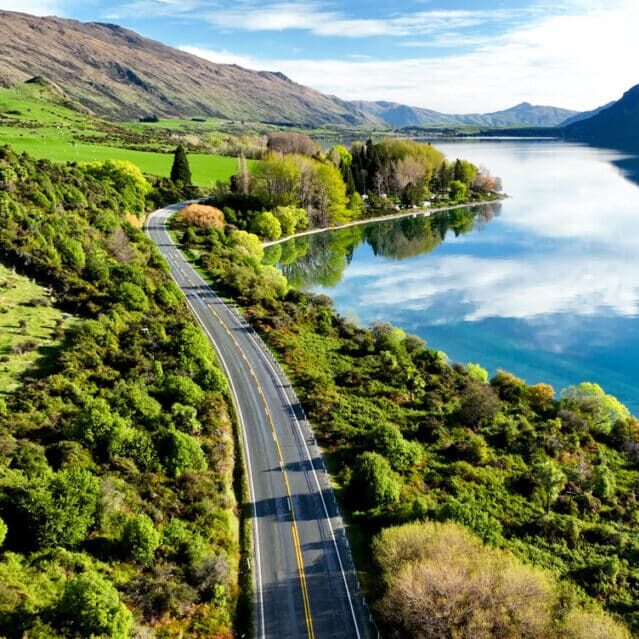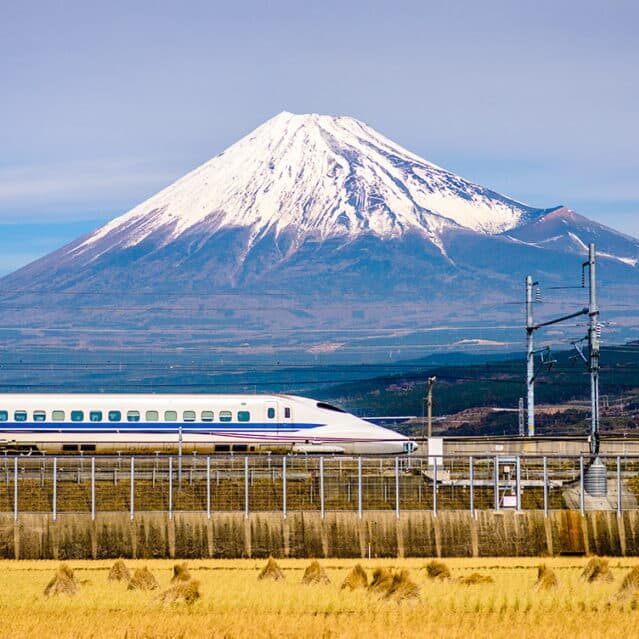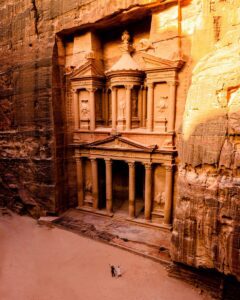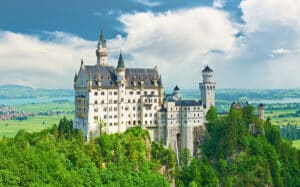How to Visit Jordan’s Desert Castles on a Day Trip
Disclaimer: This post may contain affiliate links. Please see our Disclosure Policy and Advertiser Disclosure for details.
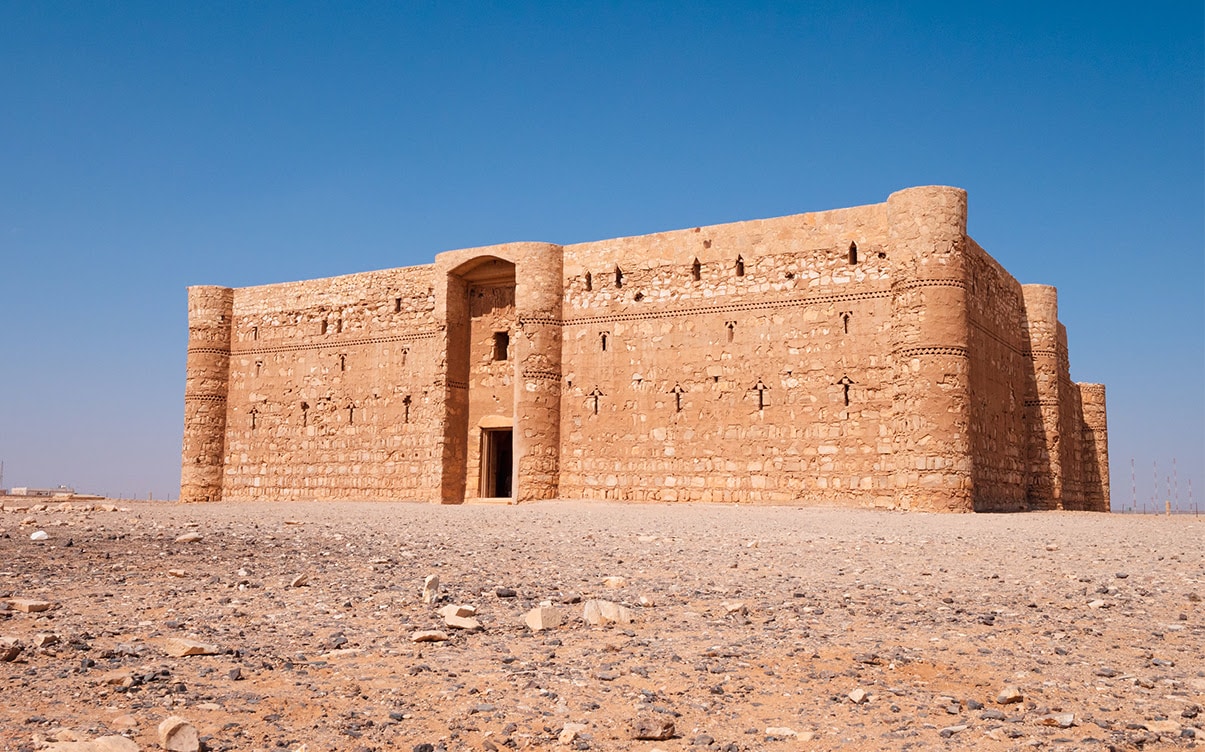
Throughout human history, various groups of people have sought to construct the most elaborate homes and fortifications. Whether for warfare or to flaunt power and influence, castles dominate the landscapes in countries around the world. We’ve even talked about them before here on this blog, like when we discussed how to visit Neuschwanstein Castle in Germany, the castle that inspired the one in Sleeping Beauty.
So, when you think of castles, the picture you’re likely to have is one from a fantasy film, perched on a hill overlooking a city surrounded by pastoral European greenery. It’s no surprise that this is the common picture, either, with tens of thousands of castles located on the continent.
But did you know that there are castles in other landscapes as well?
Jordan is home to some absolutely stunning, if stark and isolated, castles located deep in the arid landscapes. These so-called desert castles follow a very different sort of architecture and design than the European castles you’re used to, but that doesn’t make them any less impressive.
You can visit the castles in Jordan, and we think it’s a great trip to pull off, especially if you’re a fan of UNESCO World Heritage Sites. So, let’s dig right in and talk about it!
What Are Jordan’s Desert Castles?
Jordan, officially called the Hashemite Kingdom of Jordan, is a country in the southern Levant region of the Middle East. It’s south of Syria, west of Iraq, and north of Saudi Arabia. The country is relatively small, mostly arid desert, and is largely hot and dry. It’s also one of the seats of human life, with signs of human habitation stretching back over 200,000 years in the country.
The castles in Jordan are very old. Many of them were constructed as far back as 600-700 AD, and they served as the seats and hubs of commerce, politics, and agriculture. They also served as defensive structures, of course.
What’s really interesting is that there are two kinds of castles in Jordan. There are a bunch of more traditional castles found throughout the country, constructed in a more “conventional” fashion, usually up on hills and with designs more reminiscent of European castles.
Meanwhile, the desert castles tend to be stark and visible on large, open expanses of desert plain, much older and with a very different architectural style. They really don’t look like what you might picture when you think of a castle, but that doesn’t make them any less worth visiting.
There have been efforts a few times throughout history to come up with another name for the desert castles since they don’t resemble more traditional castles, but no one has come up with a term that adequately describes them. So, “desert castles” remains the label.
There are at least nine desert castles in Jordan, and they’re all located in the north and northeast areas of the country. You may or may not want to visit all of them in one day, but a multiple-day trip could also be effective if you’re willing to plan it properly.
What You Need to Know For a Trip to Jordan
Before we get deep into discussing the specific castles, we should talk about visiting Jordan in general. Jordan isn’t as typically known as a tourist destination, and the phrase “the middle east” can be scary for some people. While the reality is that it’s not some war-torn conflict zone where you risk getting caught in the middle of a gunfight, it’s perhaps less safe than visiting the Maldives, you know?
First, some key facts.
- The official language of Jordan is Arabic. While many people speak English, particularly tour organizers and others who cater to tourists, don’t expect to get by without the occasional challenge.
- The currency of Jordan is the Jordanian Dinar. Cash is widely used, and while you can get by with a Visa or Mastercard, you’ll often run into issues if you don’t have enough cash on you, especially for remote locations like the desert castles.
- Jordan can be a moderately expensive country to visit, especially in the cities. You’ll likely want to stay at the top-end resorts if you want comfort, and that can add up over lengthy stays.
- The weekend is Friday and Saturday rather than Saturday and Sunday, so if you’re expecting later hours on Friday, you might be left hanging.
- Public transportation is limited, infrequent, and aimed more at locals than tourists, so it’s not something to rely on.
When should you plan a visit to Jordan? Shoulder seasons – spring and fall, that is – are generally the best.
Jordan gets very cold in the winter due to its Mediterranean location and arid environment, with icy winds and even snow. That’s right: snow in the Middle East! Winter is the wet season where the majority of their annual rain/snowfall happens, as well. Some tourists still decide to visit in the winter, especially if you’re more acclimated to the cold and don’t mind dealing with snow, and being able to see some of the castles and other sights with much less competition is very nice indeed.
March through May is the best time for hikes and outdoor adventures, as the flora of Jordan springs to life after all of the rainfall. It’s truly a unique environment. It’s also the best season to visit for everyone else, though, so book well in advance so you don’t have to fight crowds for hotel rooms.
Summer is very hot, with temperatures well over 100 degrees, a hot wind, blazing sun, and oppressive environments. If you’re sensitive to sunlight or heat, it’s very much not a good time to visit, and can be very dangerous to the unprepared.
Fall is also good, though not quite as good as spring, so many tourists choose it as a backup if spring is too booked up.
Is there anything to know culturally about Jordan? Of course. Jordan is an Islamic country, which means people expect conservative dress in particular. Women should generally avoid tight or revealing clothing, including skirts or loose pants that cover at least the knees and shirts that cover the shoulders and upper arms. You don’t need a headscarf or anything like that, though.
Driving in Jordan has some cultural sense of being a wild and chaotic experience, but it’s actually not too bad. That said, you’ll have a hard time driving to the desert castles with your average rental car, so hiring private drivers for most of your driving needs will be the easier way to handle it. Gas stations can be few and far between, too, so if you’re driving on your own, be aware of that.
Toilets are generally western-style, though TP may be scarce, so pack your own along.
The drinking water is largely safe, if for no other reason than that water is so scarce it almost all comes from purified sources already. That said, even locals tend to buy bottled water regardless, so it’s readily available and easy to obtain.
Greeting other people should be a matter of letting the locals take the lead. It’s generally a cultural norm not to make physical contact with those of the opposite sex unless you’re related by blood, so things you might think are common, like handshakes, can be left hanging. Just echo what greetings you’re offered and you should be fine.
Is Jordan safe to visit? Yes and no.
Jordan is in the Middle East, and more importantly, it shares a border with Israel and Palestine, which, as we all know, is the site of an ongoing conflict. The main city you’re likely to start in for a desert castle tour is Amman, and that’s just across the border from the West Bank. Now, it’s obviously far enough you’re not about to be hit by a stray missile, but it’s still close – distressingly so for some people.
That said, Jordan is also historically the most stable country in the modern Middle East. It doesn’t have as much unrest as, well, pretty much all of its neighbors. There are security checkpoints and a culture of tourism in place, and they don’t really want to jeopardize that, so you’re relatively unlikely to be assaulted, scammed, or outright ripped off.
We like to also look at the State Department’s recommendations. Jordan is currently a level 2 (out of 4), which is to Exercise Increased Caution. That said, some areas have specific level 4 Do Not Travel warnings.
Specifically, they warn to stay away from the border with Syria, the border with Iraq, the Syrian refugee camps, and some neighborhoods on the northeast side of Amman.
Fortunately, as long as you plan your trip properly, you shouldn’t be anywhere near any of these locations and should be generally safer. It’s always good to exercise good practices and caution when traveling anywhere, of course.
Tips for Visiting Jordan’s Desert Castles
The desert castles can be broadly divided into three groups.
The first is relatively close to Amman. It includes Qasr Al-Qastal, Qasr Al-Muwaqqar, Qasr Al-Mushatta, Qasr Al-Hallabat, and Hammam Assarah. This is a relatively short and simple loop of castles that give you some very interesting sights that are all nevertheless close to the city.
Traveling further afield, the second cluster includes Qasr Al-Kharana, Qusayr Amra, and Qasr Al-Azraq. Amra, in particular, is an exciting spot to visit as it’s the only one of the castles designated a UNESCO World Heritage Site. It’s relatively small but has some beautiful frescos and a bath complex.
Finally, the third is just one castle, Qasr Al-Tuba. This is your “hidden gem” because it’s out of the way of the other castles and somewhat harder to get to, but it’s larger and more impressive than just about every other castle on the list. People often skip it because of the annoyance of reaching it, but it’s definitely worth a look if you’re already out visiting the other castles.
One note here is that the simplest route to loop through all of the castles does guide you through one of the no-go zones listed by the State Department. Make sure to plan your route to avoid it, or hire a driver who knows to do so themselves.
A full loop of the first two clusters of castles involves about four hours of driving time, so it’s very much an all-day affair. If you’re hoping to see Al-Tuba as well, consider either making it a multi-day trip or doing two-day trips there and back for different segments of castles.
Should you join a guided tour?
Truthfully, we highly recommend hiring a guide. Knowing how to navigate the roadways, knowing the best routes to get to the castles, and even knowing good local history are all worth the price of admission.
While you don’t have to book a tour to view these landmarks, the added value, as well as the ability to sit back and enjoy the scenery on the drive, is worth it.
What else is there to do in Jordan?
There’s a lot more to Jordan than just the desert castles, though those castles are the main focus of our post.
If you’re spending more than a few days in the country, you can also consider:
- The Dead Sea, the lowest point below sea level that isn’t underwater on the planet, and a heavily salt-filled lake that can be a very unique experience to swim.
- Petra, the lost city carved out of the cliffs in southern Jordan, and one of the most famous ancient cities in the world.
- Wadi Rum, a natural and protected area of rocks carved by millennia of sandstorms, with stunning and dramatic cliffs like something out of sci-fi – and, in fact, was the scenery for some of Star Wars.
- Various non-desert castles scattered throughout the country.
- Other UNESCO World Heritage Sites, of which Jordan has seven.
While it can often seem like Jordan is stark and empty, it’s a gem in the Middle East and well worth the visit.
You may also enjoy:

